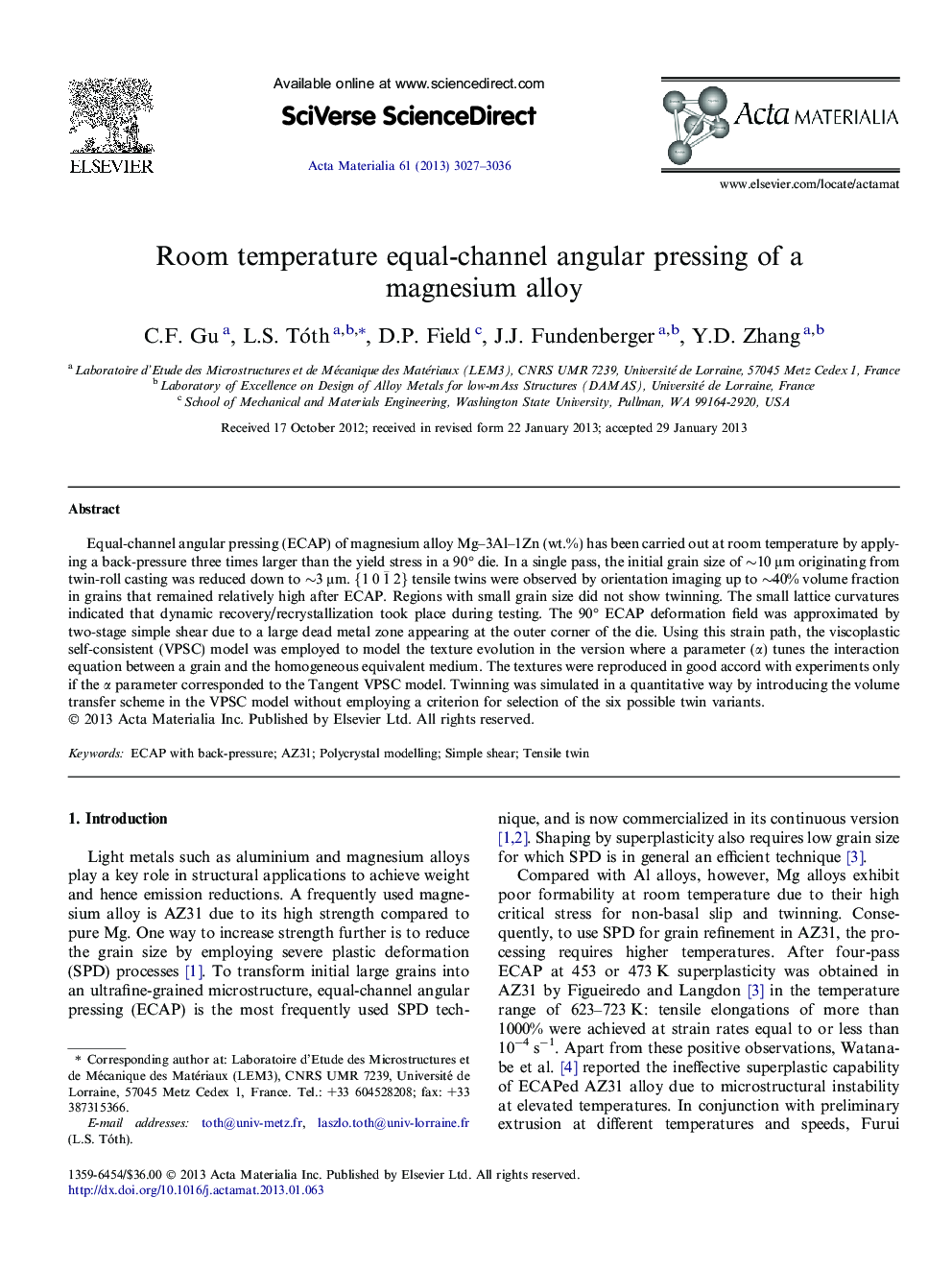| Article ID | Journal | Published Year | Pages | File Type |
|---|---|---|---|---|
| 10620290 | Acta Materialia | 2013 | 10 Pages |
Abstract
Equal-channel angular pressing (ECAP) of magnesium alloy Mg-3Al-1Zn (wt.%) has been carried out at room temperature by applying a back-pressure three times larger than the yield stress in a 90° die. In a single pass, the initial grain size of â¼10 μm originating from twin-roll casting was reduced down to â¼3 μm. {101¯2} tensile twins were observed by orientation imaging up to â¼40% volume fraction in grains that remained relatively high after ECAP. Regions with small grain size did not show twinning. The small lattice curvatures indicated that dynamic recovery/recrystallization took place during testing. The 90° ECAP deformation field was approximated by two-stage simple shear due to a large dead metal zone appearing at the outer corner of the die. Using this strain path, the viscoplastic self-consistent (VPSC) model was employed to model the texture evolution in the version where a parameter (α) tunes the interaction equation between a grain and the homogeneous equivalent medium. The textures were reproduced in good accord with experiments only if the α parameter corresponded to the Tangent VPSC model. Twinning was simulated in a quantitative way by introducing the volume transfer scheme in the VPSC model without employing a criterion for selection of the six possible twin variants.
Keywords
Related Topics
Physical Sciences and Engineering
Materials Science
Ceramics and Composites
Authors
C.F. Gu, L.S. Tóth, D.P. Field, J.J. Fundenberger, Y.D. Zhang,
